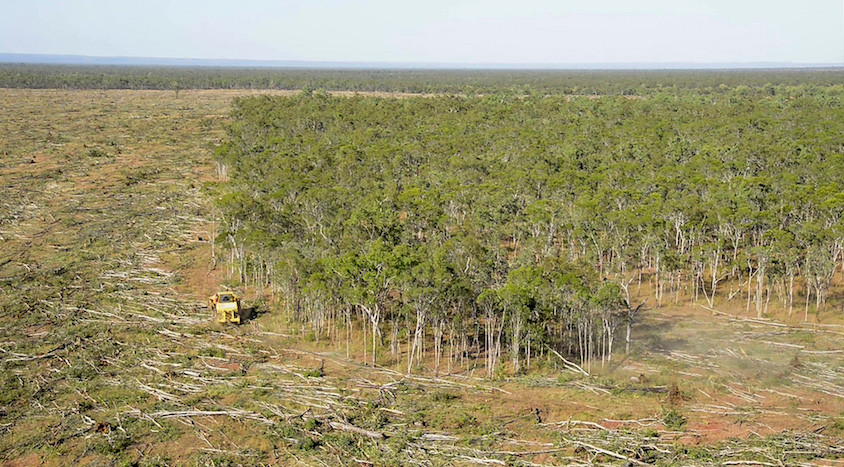Queensland’s tree clearing laws aren’t working. Therefore there is nothing extreme nor drastic about fixing them.
Since the former Newman government weakened controls over land clearing in 2012, over 560,000 hectares of forest and woodland is known to have been cleared, an area nearly twice that of the Australian Capital Territory.
In fact, failing to reverse the return to broad-scale clearing in Queensland risks damaging Australia’s international reputation as leading exporters of safe, clean and green food.
Yet even as the Palaszczuk government attempts to reinstate provisions in the Vegetation Management Act to end mass-clearing and return to a system of appropriate land management, a barrage of misinformation threatens to mislead the public and delay progress. As independent MP Billy Gordon said in a media release on Tuesday, the distortion and fear mongering is irresponsible and unhelpful.
In the two years between 2012 and 2014, land clearing in Queensland has generated over 60 million tonnes of greenhouse gas emissions, led to the bulldozing of 200,000 hectares of known threatened species habitat, increased soil loss and pollution of streams and increased pressure on to the already damaged Great Barrier Reef.
In truth, it would be extreme negligence to allow this to continue and damage Australia’s international reputation.
Although it has taken over 12 months for the Palaszczuk government to introduce the Vegetation Management (Reinstatement) and Other Legislation Amendment Bill to Parliament, its urgency should not be understated. The Bill restores provisions that were previously accepted by the agricultural sector in 2006.
In 2009, the Bligh government moved to regulate, not ban, clearing of high value regrowth in endangered ecosystems, threatened species habitat on steep slopes and along waterways. At the time Agforce welcomed the changes, saying; “the new legislation balances productive land management while maintaining biodiversity values.”
The end of broad-scale land clearing was a settlement arrived at after extensive community consultation and with a generous $130 million assistance package for the agricultural sector.
With more consultation and another $2 million provided to industry to adapt, these modest improvements were widely accepted.
But in 2015, over 112,000 hectares of tropical woodland and forest was slated for clearing under the guise of so-called ‘high value agriculture’ with nearly half already destroyed. This occurred almost exclusively on two properties in Queensland’s Gulf country and on Cape York Peninsula.
An independent review of one property’s application by the Palaszczuk Government found that approval was not justified as there was too little information to meet even the weakened criteria of the Newman Government.
The recently introduced reinstatement Bill, currently before a Parliamentary Committee, will close the loophole for so-called high value agriculture that currently allows broad-scale clearing. Further, high value regrowth will again be regulated unless already exempt.
Agricultural projects have always had the ability to apply to the Coordinator General for coordinated project status, providing an exemption to Beattie-Bligh era laws and those proposed for reinstatement under Palaszczuk.
These modest measures are simply reinstating necessary baseline checks for the appropriateness of land clearing in Queensland at a time when such industrial scale clearing of the places we all love were running out of control. Claims by Hinchinbrook MP Andrew Cripps and others that the agricultural sector will come to a screaming halt are simply political scare-mongering and damaging to the sector.
There is no correlation between agricultural production and Queensland’s vegetation laws. Further, there is growing international consumer demand for deforestation-free products and a number of major suppliers have committed to eliminating deforestation from their supply chains by 2020.
The reinstatement of Queensland’s vegetation management laws cannot come fast enough.
Without it we are doomed to repeat the mistakes made in southern Australia where unregulated land clearing delivered a crisis of salinity, soil loss, river degradation and species extinctions leaving taxpayers with a $10 billion repair bill. And our brand as a clean, green and safe home for agriculture could be left in tatters.
Andrew Picone is the Northern Australia Program Officer for the Australian Conservation Foundation. Martin Taylor is the Protected Areas and Conservation Science Manager for WWF Australia.
This article was originally published via the SBS website on 22nd of April. It has been republished with permission of the authors.


